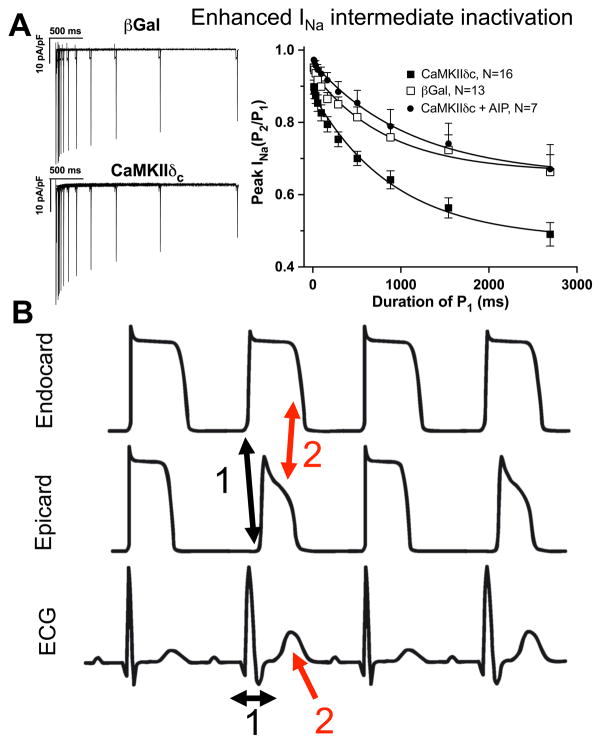Figure 7.
CaMKII-dependent regulation of INa gating and alternans. A) CaMKII-dependent phosphorylation of NaV1.5 has been shown to enhance INa intermediate inactivation (reproduced from Wagner et al14 with permission; whole-cell patch clamp in rabbit ventricular myocytes). As a result, the number of available Na channels is reduced especially at shorter diastolic intervals. B) Consequences of enhanced INa intermediate inactivation: CV and repolarization alternans. Reduced Na channel availability results in slowed intramural conduction and slowed AP upstroke velocity (1) evident as broader QRS complex on surface ecg (1). In addition, K channel expression is larger in epicardium. Therefore, repolarization is faster in epicardium, especially if Na current is reduced (2). This leads to increased transmural dispersion of repolarization evident as larger and wider T wave on surface ecg (2). Interestingly, Na channels in intermediate inactive state cannot be activated (and become refractory) during the excitation. Thus, these channels are available for the consecutive excitation. Consequently, conduction velocity and AP upstroke velocity will be larger, AP duration longer for the consecutive excitation: the typical pattern of CV and repolarization alternans.

